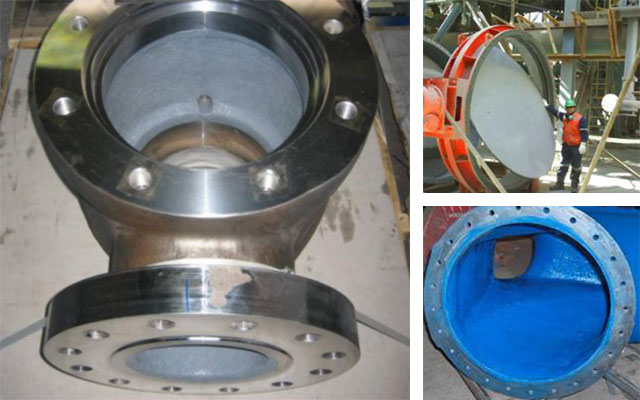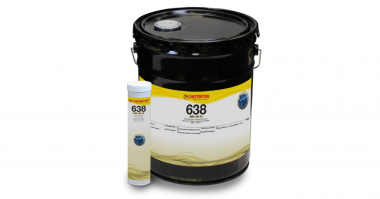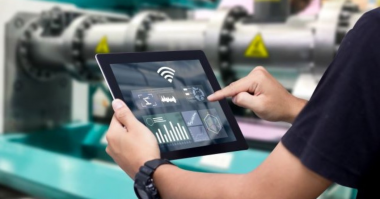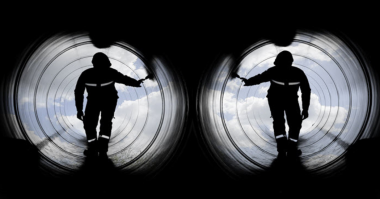Author: Steve Bowditch, Global Market Development Manager, ARC Efficiency & Protective Coatings Business Group, A.W. Chesterton Company
Valves are used to control or moderate flow of gases, liquids, and slurries, and contain pressure. For reasons of economy, manufacturers supply them in a limited range of materials. Each of these materials is suitable for a limited range of common exposures and has the benefit of being easily available in a short time frame. However, for corrosive or erosive conditions, the user may require specialty materials which can increase cost and delivery times. The balance of cost versus the likelihood of failure due to corrosion must be taken into account along with the criticality of the component; i.e. what are the consequences of a failure?
Many coatings, including both organic (paints, for example) and inorganic (zinc, chromium, nickel, aluminum and others), are applied to the outside surfaces to protect those surfaces. However, protecting the inside of a valve is a bit trickier because of the myriad of factors that come into play. Some of these factors include but are not limited to:
- The fluid or gas composition and constituents, pH, suspended solids, chemical additions;
- Minimum, maximum and nominal temperatures as well as presence of thermal shock or cycling;
- Maximum and nominal design pressures (vacuum or positive);
- Flow velocity, over time, and any localized turbulence;
- Operational usage. Is valve operated continuously, intermittently or in standby?
- Valves criticality to process control.
If a coating is desired then selection would be based on anticipated service conditions. There are several options available and each will be discussed along with their “pros” and “cons”.
Fusion Bonded Epoxy (FBE)
FBE coatings utilize a powdered thermoset epoxy which is applied under a fluidized bed or electrostatic spray system to achieve the desired film thickness. The epoxy is produced by pre-reacting a resin and curing agent into a film which is then crushed and ground into a fine powder size with particle ranges <.005” (125µm). Prior to applying the coating, the valve is heated to approximately 400°F to ensure liquefaction of the powdered epoxy when it contacts the hot surface of the valve. The heated mass also drives the applied epoxy to full cure. These systems are normally applied at thickness of .01-.02”(250-500µm) dry film thickness per coat and are excellent at providing corrosion protection for aqueous solutions with pH ranges between 2-10, but they would have minimal resistance to abrasive slurry conditions or elevated levels of chemical attack.
Liquid Epoxy
These also are thermoset based systems but are supplied to the user in two parts (resin and curing agent), in a liquid or paste state, which may then be mixed at the application site and applied by brush, roll, spray, trowel, or mold. Since these systems can utilize various epoxy resins and curing agents, their ability to withstand wide ranges in temperature, corrosion by chemicals, and abrasion by entrained solids can be significant. The ability to incorporate various chemistries as well as functional reinforcements for improved permeation resistance or abrasion resistance allows these products to be considered for more aggressive applications than FBE coatings.
Thermoplastic
These systems include but are not limited to ethylene chlorotrifluoroethylene (ECTFE) for high temperature, chemical exposures, polytetrafluorethylene (PTFE) for non-stick properties. They are applied in a similar fashion to FBE systems, in that they are powdered applied using a fluidized bed or electrostatic spray, and may be applied in thin or thick films. They also require preheating the valve body and components to ensure proper wet out and adhesion of the coating results. Many valve manufacturers actually fabricate valves out of these same thermoplastic materials for low pressure service based on their superior corrosion resistance.
Hard-Coating
Coatings in this category can include metallic alloys of aluminum, copper, nickel, iron, molybdenum, tantalum, and cobalt, as well as ceramics such as aluminum oxide, titanium oxide, chromium oxide, and zirconium oxide. These coatings come in the form of a powder or wire which is fed into a heat steam which melts the materials and then into a high velocity inert gas flow which propels the plasma onto the preheated valve surface. The high velocity oxy-fuel application provides dense films of high hardness materials with very good temperature limits. If the surface is not pre-heated, HVOF film density, permeability, and mechanical strength of the film is reduced.
Hard-Facing
Hard-facing coatings are metallic coatings supplied in rod or wire spool form which are applied by various welding processes, such as shielded metal arc weld (SMAW), metal inert gas (MIG), or tungsten inert gas (TIG) at relatively thick layers for extreme abrasion resistance. One of the oldest hard facing materials used in valves is Stellite® 6 (the name Stellite was trademarked in 1911), which is based on cobalt, chrome and tungsten carbide. However, Tribaloy® alloys, consisting of cobalt, chromium and molybdenum, are becoming increasingly popular for high abrasion applications. These systems are extremely useful for severe abrasion and high temperature exposures.
When introducing metallic systems, either hard-coating or hard-facing, caution is urged to avoid extreme dissimilarities in electromotive potentials between the base metal and coating. If significant differential exist, galvanic corrosion can occur at the more anodic element. Another concern associated with hard-coating or hard-facing is the effect of heat during application on the valve element. For small, simple parts, cracking is not usually a problem. However, in larger and more complex parts, cracking can occur from the buildup of thermally-induced stresses caused by solidification shrinkage and thermal expansion and contraction. Certain metals, like duplex stainless steels, are prone to cracking when heated to high temperatures.
It’s no secret that the use of coatings in valves extends service life and helps improve operational efficiency as part of the pumping system, especially when used in conjunction with pump coatings. The issue, however, is that not all coatings are created equal – so the correct identification and specification of a coating based on system operating conditions is critical to its success.
 Download this Valve Coatings Reference Chart to get a better understanding of which coating should be specified for your specific valve operating conditions.
Download this Valve Coatings Reference Chart to get a better understanding of which coating should be specified for your specific valve operating conditions.
The next article in this valve coatings series will discuss the surface preparation and application requirements to ensure maximum success for an internal valve coating system.
Use the Empowering Valves’ industry forum to post your valve coating questions.





Comments